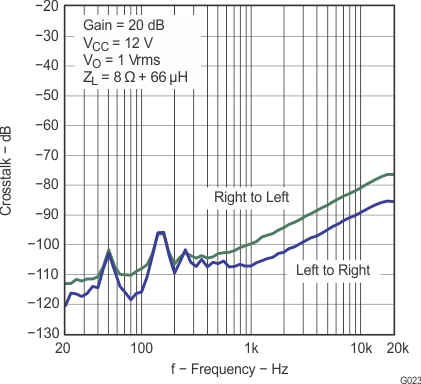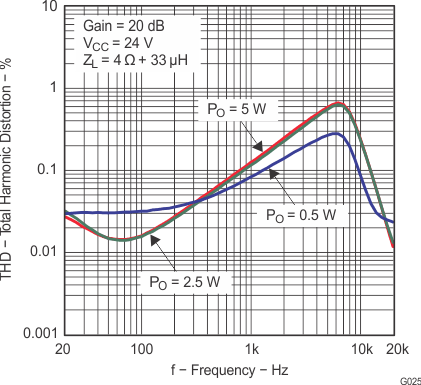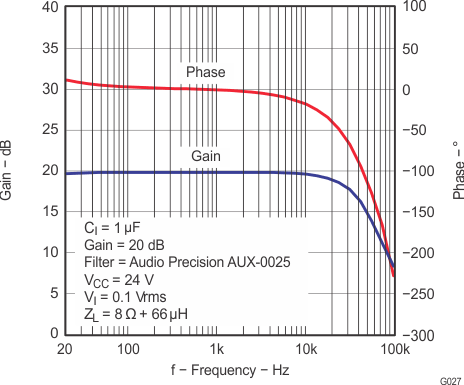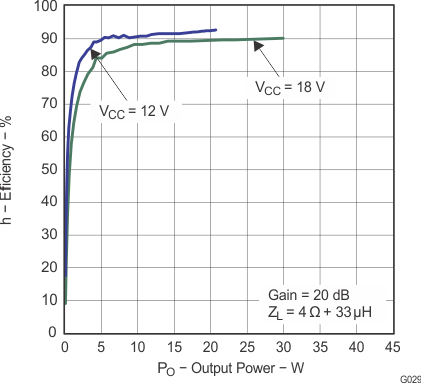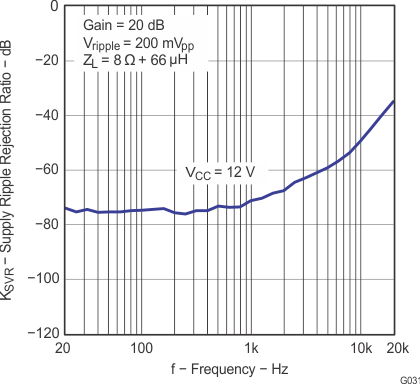ZHCSAA4B September 2012 – September 2015 TPA3110D2-Q1
PRODUCTION DATA.
- 1 特性
- 2 应用
- 3 说明
- 4 修订历史记录
- 5 Pin Configuration and Functions
- 6 Specifications
- 7 Detailed Description
-
8 Application and Implementation
- 8.1 Application Information
- 8.2
Typical Application
- 8.2.1 Design Requirements
- 8.2.2
Detailed Design Procedure
- 8.2.2.1 TPA3110D2-Q1 Modulation Scheme
- 8.2.2.2 Ferrite Bead Filter Considerations
- 8.2.2.3 Efficiency: LC Filter Required With the Traditional Class-D Modulation Scheme
- 8.2.2.4 When to Use an Output Filter for EMI Suppression
- 8.2.2.5 Input Resistance
- 8.2.2.6 Input Capacitor, CI
- 8.2.2.7 BSN and BSP Capacitors
- 8.2.2.8 Differential Inputs
- 8.2.2.9 Using Low-ESR Capacitors
- 8.2.3 Application Curve
- 9 Power Supply Recommendations
- 10Layout
- 11器件和文档支持
- 12机械、封装和可订购信息
6.9 Typical Characteristics
All measurements taken at 1 kHz, unless otherwise noted. The TPA3110D2-Q1 EVM (which is available at ti.com) made the measurements.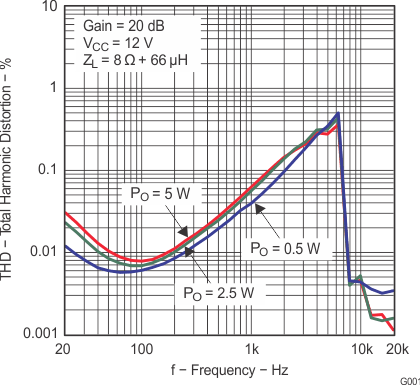
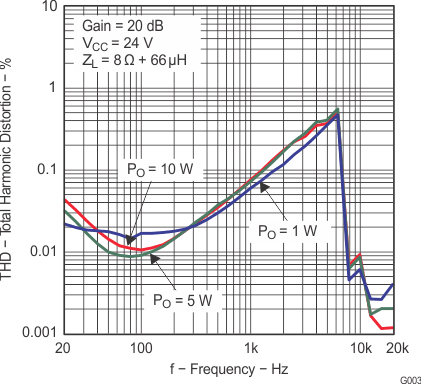
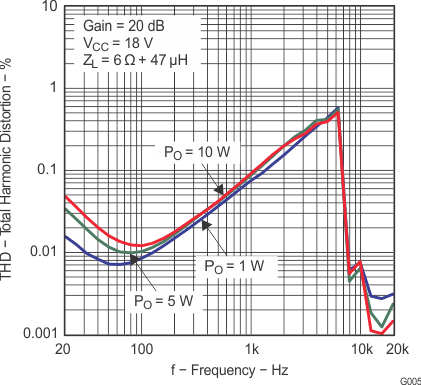
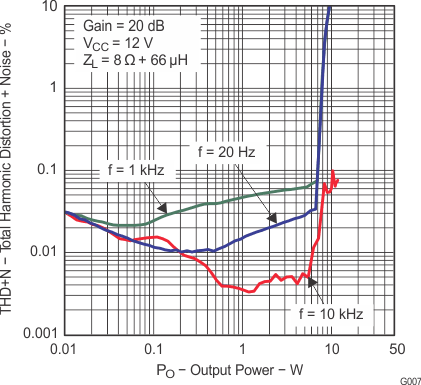
Lighter color represents thermally limited region.
Figure 7. Total Harmonic Distortion + Noise vs Output Power (BTL)
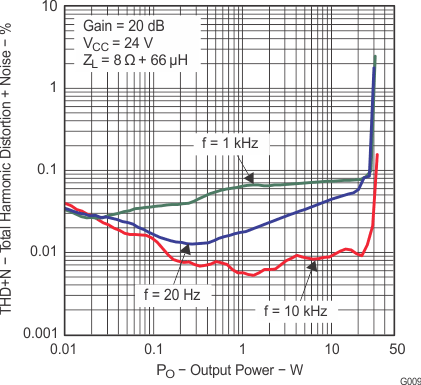
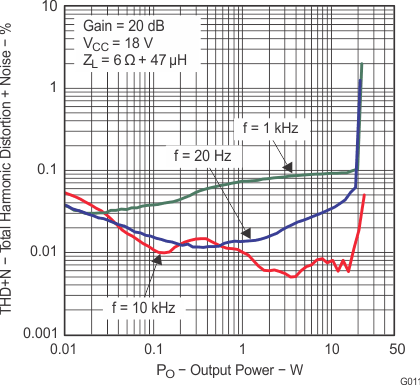
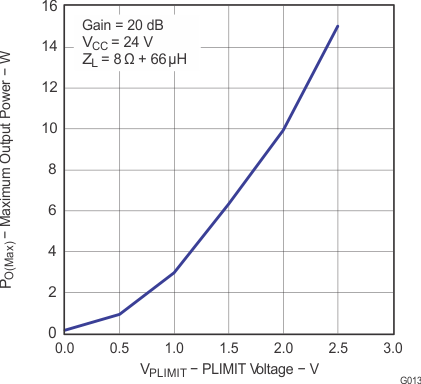
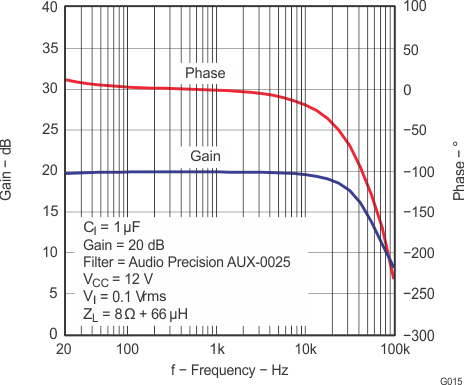
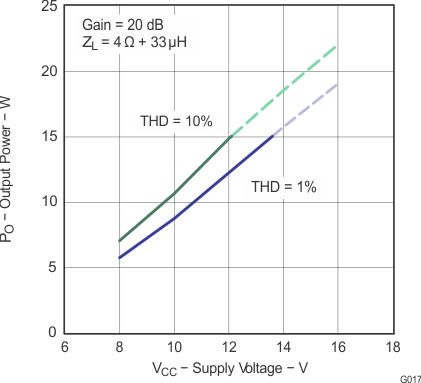
Note: Dashed lines represent thermally limited regions.
Figure 17. Output Power vs Supply Voltage (BTL)
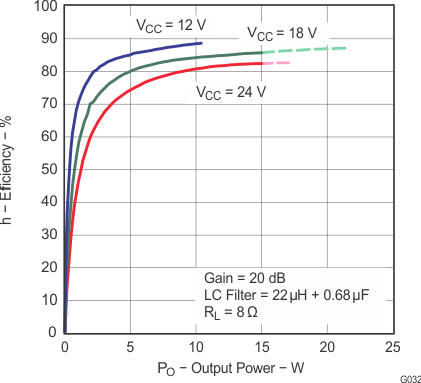
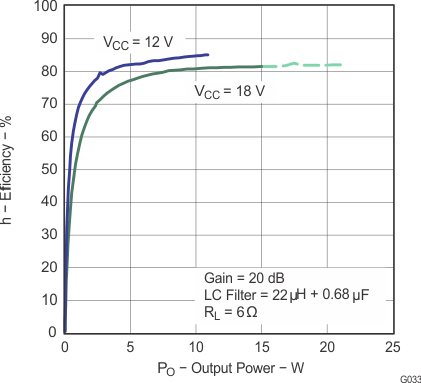
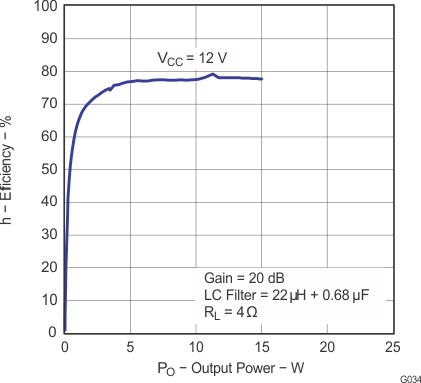
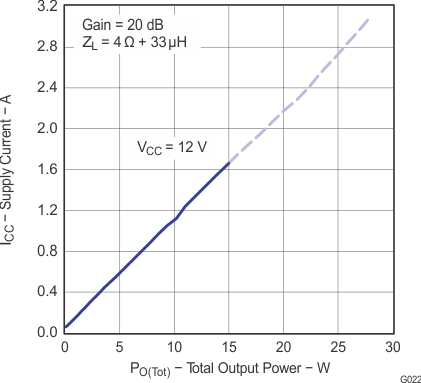
Note: Dashed lines represent thermally limited regions.
Figure 25. Supply Current vs Total Output Power (BTL)
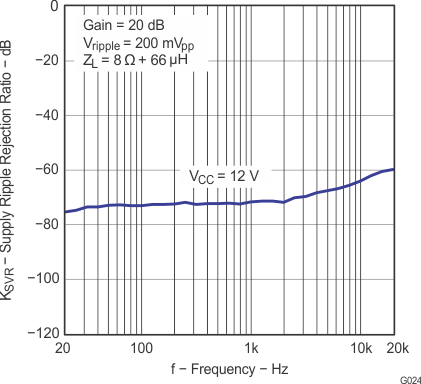
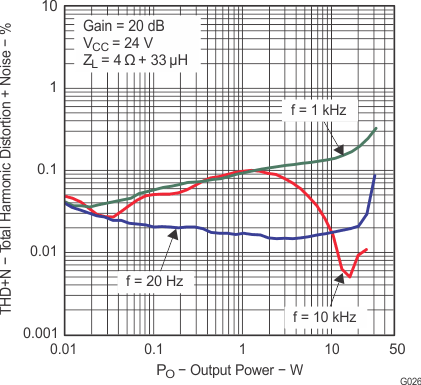
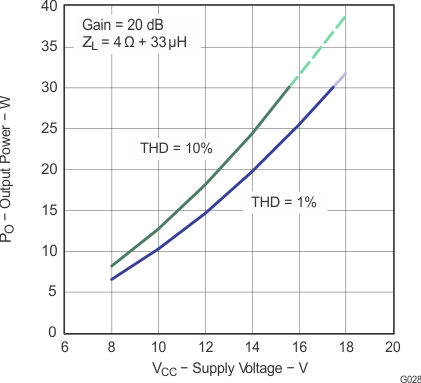
Note: Dashed lines represent thermally limited regions.
Figure 31. Output Power vs Supply Voltage (PBTL)
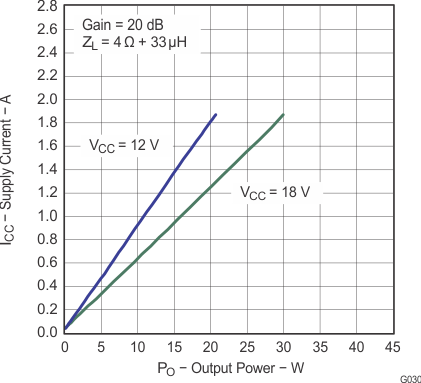
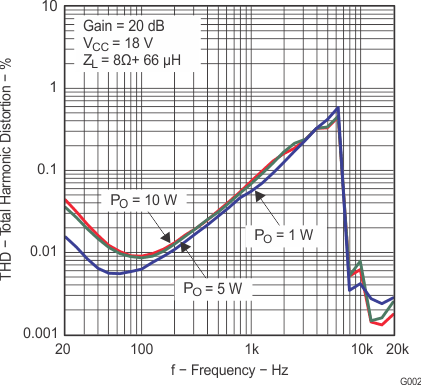
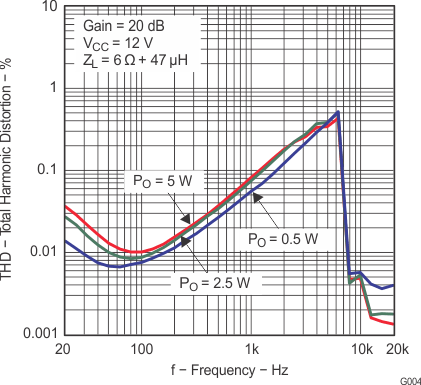
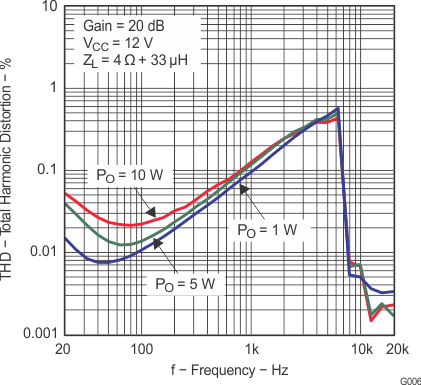
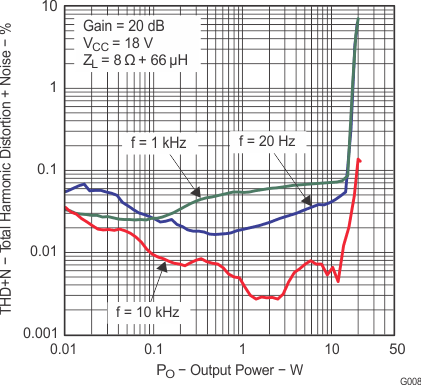
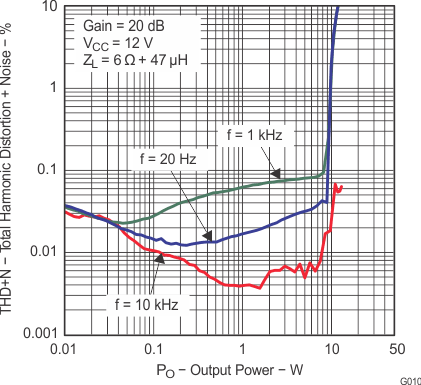
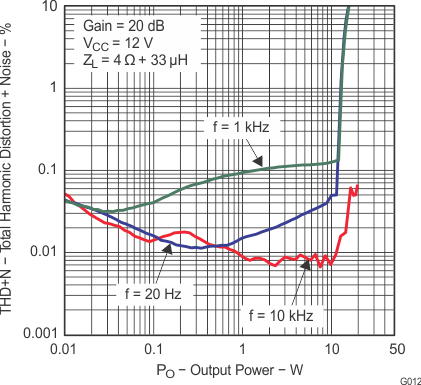
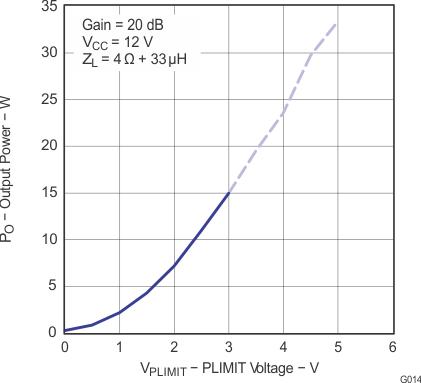
Note: Dashed lines represent thermally limited regions.
Figure 14. Output Power vs PLIMIT Voltage (BTL)
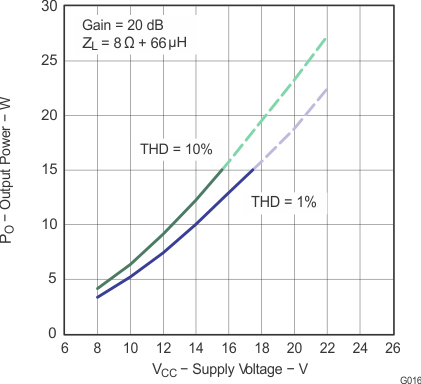
Note: Dashed lines represent thermally limited regions.
Figure 16. Output Power vs Supply Voltage (BTL)
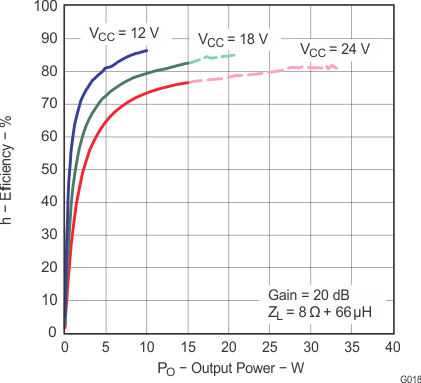
Note: Dashed lines represent thermally limited regions.
Figure 18. Efficiency vs Output Power (BTL)
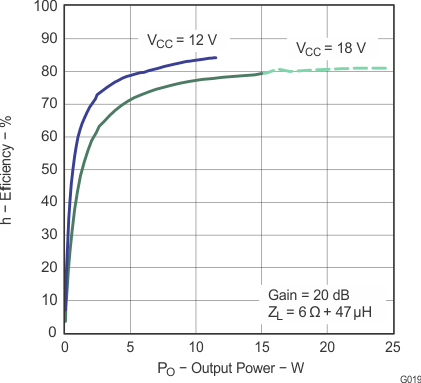
Note: Dashed lines represent thermally limited regions.
Figure 20. Efficiency vs Output Power (BTL)
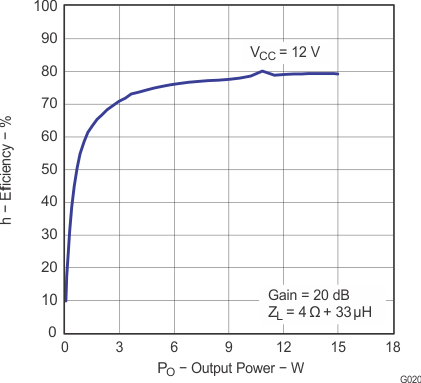
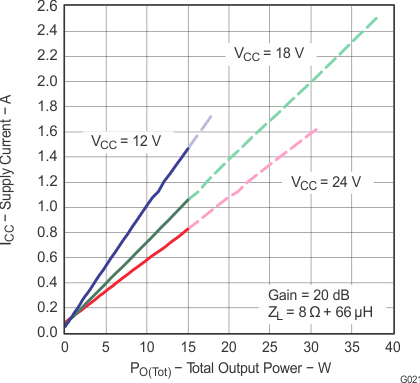
Note: Dashed lines represent thermally limited regions.
Figure 24. Supply Current vs Total Output Power (BTL)
